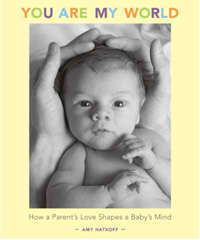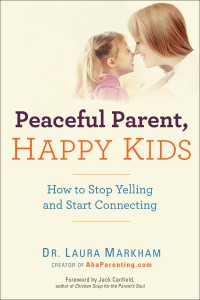By Leyani Redditi and Cason Zarro, API Leaders of API of Greater Atlanta, Georgia
Q: I am feeling overwhelmed with household chores and parenting. I want to be present for my children, but the pressure of everything I need to get done is so stressful. How can I get everything done and have time for my kids?
 A: I have struggled with this balance myself. It is fine to say to a brand new parent not to worry about the dirty dishes, but eventually they do need to get done. I find that when my home is relatively clean and we have food in the fridge and clean clothes, my family and I are less stressed.
A: I have struggled with this balance myself. It is fine to say to a brand new parent not to worry about the dirty dishes, but eventually they do need to get done. I find that when my home is relatively clean and we have food in the fridge and clean clothes, my family and I are less stressed.
So how does it all get done? Well, first of all, it doesn’t ALL get done. Some things will go by the wayside. Maybe it is the folding or ironing part of laundry. A basket of clean clothes still counts as doing laundry. By all means cut corners where you feel you can while still feeling good in your space. But even then there are repetitive and time-consuming tasks that somehow need to get done.
Here is what I have found to be the most helpful for getting things done while taking care of my children: Figure out a system, do things in short increments and do something each day.
Find your system: Everyone has a different way of organizing themselves (or not), but when you sit down and list the things that need to happen in a day, you see why you are so busy (and tired) and why sometimes it feels so overwhelming. So make the list, give yourself credit for how hard you work and then get strategic.
Figure out what things need to be done each day, each week and each month. How can other family members help with these tasks? You all live in the house and can all help in some way. My 3-year-old helps set the table and picks up toys during our family 10-minute toy pick-ups. My 7-year-old puts away her own clean laundry and feeds our pets. My husband helps with dishes and home maintenance. I have found it very helpful to have a Morning List and an Evening List. And, no, we don’t get everything done each day, but we are all involved, and we know what needs to be done (most days).
Work in short increments: Having a newborn taught me to use the very short amounts of time I had with both hands free to get a lot done. Talk about learning to prioritize! I love the idea of only spending 10 or maximum 15 minutes on a task. I don’t wait until I have an hour to do chores. I do 10 minutes here, 10 there, and slowly things get done. Really it’s finding the rhythm of your day and your family. I think about fitting in little bursts of activity so that I can have the luxury of long chore-free stretches with my children.
Do something each day: Household chores are ongoing and repetitive; the plates get dirty over and over again. For me, learning to think of these activities as “life maintenance” was very helpful. Just like brushing my teeth, there are some things that need to get done every day (or at least most days). I had to give up the idea that at some point I’d find a bunch of free time to get it all done. So I do something each day. Sometimes getting the dirty dishes into the dishwasher is it. Other days, we pick up the house as a family. We put on great music and set the timer for 10 minutes. Then it is a mad dash around the house full of laughter as we pick up and put away what we can.
Most importantly, give yourself credit for whatever you get done. Feel good you are doing something rather than bad that you are not doing everything.
~ Leyani Redditi
*Scroll down to read more suggestions from our readers.
Q: My 6-week-old baby cries and cries every time he is in the car. How can I help him like the car?
A: Although many babies are put to sleep by the sound and vibration of the car, there are quite a few babes who cry and want to get out. Time will certainly make this better, but there are some things you can try in the meantime.
Some babies are simply not comfortable in their infant car seats. If you think that is the case, you may wish to try a different model car seat. Sometimes switching to a convertible seat may result in a happier baby because the seat may be more comfortable. A convertible seat is one that can be placed rear-facing for infants, and then turned around when your little one has reached the rear-facing limits for the seat. You should consult the car seat manual to determine if your infant meets the minimum weight and size requirement for a convertible seat.
Nurse or feed your baby right before you leave. Make sure his diaper is dry and that he has burped. You want him to be as comfortable as possible before strapping him in his seat.
If there are any music or radio shows that you listened to while pregnant, try listening to them in the car. The familiar noises can be very comforting for babies. Try singing some lullabies or upbeat songs, depending on what your baby prefers. Some babies are soothed by white noise. In a pinch, radio static can act as white noise.
You could also try placing a T-shirt you’ve recently worn close to your dear son. The familiar smell of Mama may help him feel less lonely. Some families have found it helpful to tape a picture of mom’s face where the baby can see it. If you are the passenger, reach back and rub his head or sit in the seat next to him.
Sometimes you may need to pull over to a safe place and nurse or otherwise comfort your baby. I have found it helpful to pull over, sit in the seat next to my baby and lean over to nurse her. She will even fall asleep occasionally, and I can sneak around and drive while she sleeps peacefully. If your son will be comforted this way, it can be helpful to keep him buckled so that he doesn’t wake up when you are trying to get him back in his seat. You can also try nursing him like this before even leaving the house.
Allow extra time, especially if you need to be somewhere at a certain time. This can reduce your stress when you do need to stop. Reduce unnecessary trips, and encourage friends to come visit you.
If all else fails, talk to your pediatrician to rule out a medical reason such as acid reflux.
~ Cason Zarro
We asked readers on Facebook to tell us how they find balance with household chores and parenting. Click here to read the full conversation on Facebook.
Sunshine: Lower your expectations. Best piece of advice that was given to me!
Erin: We gave up cable and hired a housekeeper to come once every 2 weeks. Best money ever spent in our home of 2 full-time workers. It allows us to spend time with our kids after work and still get lunches packed, etc.
Ina: Prioritize–listening to your child’s idea is a “now,” folding laundry is a “later,” and cleaning the garage is a “maybe.” Downsize–don’t have too many clothes, toys and knick-knacks around. The more you own, the more you clean. Change the bottlenecks–if there is a time of crazy stress during the day, try to change it (e.g., if bathing in the evening is stressful, bathe them after lunch).
Leah: Sometimes you just have to let go of the phrases “I need to” or “I should.”
Elizabeth: I find a lot of comfort from a weekly chart. I do just two or three main house cleaning things per day, and then I’m not spending an entire day cleaning everything. I also remind myself that my chart is a guide, not a “to do” list. I keep my kitchen tasks for after school time since my son is in there already doing his homework. He sits up to the counter, and I help him with his homework as needed while I do the dishes and get dinner on.
Sandra: The bottom stair and a shelf at the top of the stairs are the gathering area for things that need to be put away. No wasted trips up or down the stairs. Going up anyway–take the packs of tissue to the hall closet. Coming down–bring the glasses to put in the dishwasher.
Jennifer: I take a nightly bath with my two youngest (4 months & 19 months). It’s probably the only way I can even fit in a bath at night for myself. It’s such a sweet moment and my favorite part of the day. I wash each, hand them one by one to dad to dress, then rinse off myself. Simple things make a difference!
Jane: Keep kids involved; it’s their house, too. All three of them love it when I allow them to wash the bathroom (not the toilet). We get $2 spray bottles, fill with water and either vinegar, bicarbonate or lemon, and let them go for it. Let go of your pre-kids standard.
Brittany: Just decide sometimes that it’s actually not the priority; sometimes playing with your kids, reading stories, or taking a relaxing bath while listening to jazz or opera is more important. Sometimes meditating and deciding to be grateful that it’s your life and those are your kids before you crank up the music and start working helps you keep focus.
Cathy: By just implying it should all be balanced and we should be managing it–without staff–is just unfair at times.
Savannah: Having a routine of cleaning during a certain part of the day has unintentionally given my daughter a routine for when to have “alone” play time, which she enjoys quite a bit.
Maria: If you have something you need to do without kids nagging, give them lots of attention first. Play a game, get exercise, feed them, snuggle. Then try to get your task done.
Lauren: Babywearing definitely helps!
Aimee: Honestly, I just let things go. I clean up food and big messes, but our house is not perfectly clean unless we have guests coming over, then I do a quick major overhaul! We work full time, and I’d rather spend the time I do have with my daughter. I’d love to always have healthy home-cooked meals, but we do a lot of ready-made meals from Trader Joes.
Louise: My hubby is superb and cleans the kitchen whilst balancing both kids in the mornings, so I can sleep a bit more (5-month-old feeds 2 hourly), and I do the rest of the house. Online grocery shopping is a godsend!
Elizabeth: A few tactical things we do to help keep me from being overwhelmed: hired a cleaning person, make two meals on Sunday so we have leftovers for the first half of the work week, and use a grocery list app.
Josie: While my husband is doing the bedtime routine, I take 10 minutes to pick up the toys and straighten up a bit. It’s easier to start from zero the next morning!
Melanie: I have baskets in several rooms, so when I see something that doesn’t belong in that room (comb, dog collar, Lego brick, calculator, etc.), I pop it in the basket. Then every week or so, I empty all the baskets into a pile on the lounge floor and shout, “Come and get your stuff; anything not collected goes in the charity bag.” Works every time, and we quite often have stuff there for charity, too.
Kristen: My husband shares in all chores and, in fact, probably does more than me since our daughter was born (9 months old and breastfeeding). I spent half my childhood pretending to keep house or work … just because our society tells us these things aren’t fun doesn’t have to make it true for us. For our family, housekeeping is part of the overall peace of our lives.
Judy: I am thinking about doing a home office share with another work-from-home mom so that we can trade off child care on 2 hour shifts for each other while the other gets stuff done.
Cherry: I remind myself that it isn’t my ever-so-clean carpets and clean kitchen that I will be remembering on my death bed … it will be my time spent with my DD.






 In modern Western cultures, mothers have more information about breastfeeding than any time in human history. Unfortunately, most of this is information for the left side of the brain, which is fine for lots of tasks. But too much left-brained information can make you anxious about breastfeeding.
In modern Western cultures, mothers have more information about breastfeeding than any time in human history. Unfortunately, most of this is information for the left side of the brain, which is fine for lots of tasks. But too much left-brained information can make you anxious about breastfeeding.

